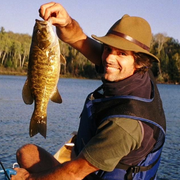This is an investigation of the response of northern boreal forests to changes in arctic seasonality using an existing circumpolar network of centennial to millennial-length tree-ring width and density records that will be integrated with targeted field observations, satellite data and modeling efforts. The sensitivity of northern forests to arctic warming and related seasonality effects is likely to be highly complex, involving shifts in the timing and dynamics of multiple factors that can significantly impact tree growth. Researchers will assess network-based as well as limited new tree-ring data from sites along a latitudinal gradient in northeastern Alaska, one of the regions of greatest warming on the globe today. Sites will be sampled along a south to north gradient spanning from areas of: 1. interior boreal forest to 2. continuous treeline forest and 3. just north of main treeline. These data will be used to identify the nature of forest response to seasonal environmental changes across a temperature range that defines the northern limit of growth for white spruce, a dominant arctic treeline species. They will also determine if recent climate and forest growth changes appear unique (possibly anthropogenic) relative to past natural variability. Correlation, Kalman filter, spectral analyses and other techniques will allow identification of any thresholds, time-dependent changes or nonlinear shifts in growth linked to recent warming and changing climate seasonality. Ultra-high resolution, inter- and intraseasonal tree growth data (ring width, maximum latewood density as well as minimum density, early and latewood width, quantifiable wood anatomical measurements) will be compared to monthly temperature, precipitation, drought, soil moisture and radiation observations, and, where available, weekly and daily records suitable for computing the length of growing season and other seasonal parameters. A cambial growth model will permit identification of those parameters that are having the greatest impact on northern forest growth. Intraseasonal growth information will be applied to parameterize the model and hindcast controls on growth variations into the past using the tree-ring data. They will also compare the ‘in situ’ tree-ring data with high-resolution satellite-derived vegetation observations that have indicated growing season ‘greening’ and ‘browning’ in different regions of the circumpolar arctic forest biome. This project will thus provide a means to test the ability to coordinate remote sensing and ground-based ‘in situ’ observations of boreal forest growth activity in the Arctic.
Project Location
Journal Publications
Andreu-Hayles, L., R. D’Arrigo, K. Anchukaitis, P. Beck, D. Frank, A.Verstege, and S. Goetz (2011) "Varying Northern Forest Response to Arctic Environmental Change at the Firth River, Alaska", Environmental Research Letters 6, 045503, doi:10.1088/1748-9326/6/4/045503.
Dates
-Members
Principal Investigator

Principal Investigator

Co-Principal Investigator

Co-Principal Investigator

